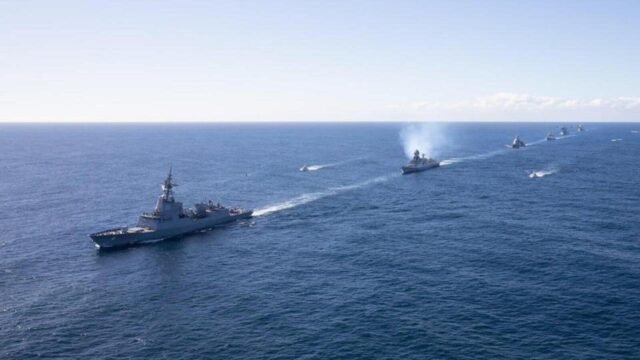The navies of India, the United States, Australia and Japan on Tuesday kicked off the Malabar naval drills at Visakhapatnam at a time when China is seeking to expand its footprint in the vast Indo-Pacific region, officials aware of the matter said.

The 11-day drills are being conducted in two stages — the harbour phase, followed by the sea phase. The first edition of the Malabar drills took place in 1992 when it was a bilateral exercise between India and the US.
It has since evolved into a multilateral event aimed at enhancing interoperability, fostering mutual understanding, and addressing shared maritime challenges in the Indian Ocean and Indo-Pacific region.
The exercise will feature various Indian naval platforms, including guided missile destroyers, multi-purpose frigates, submarines, fighter aircraft and helicopters. While Australia will deploy the HMAS Stuart, an Anzac-class frigate with its MH-60R helicopter, and a P-8 maritime patrol aircraft, the US Navy will field the USS Dewey, an Arleigh Burke-class destroyer with its integral helicopter, and a P-8 maritime patrol aircraft. Japan is taking part with JS Ariake, a Murasame-class destroyer.
Complex maritime operations such as anti-submarine warfare, surface warfare, and air defense exercises will be conducted at sea during the Malabar drills, with an emphasis on improving situational awareness in the maritime domain, the Indian Navy had earlier said.
As far as the Indo-Pacific region is concerned, China is seeking to expand its footprint by setting up military bases, bullying countries to advance its unlawful maritime claims and ensnaring vulnerable states in unsustainable debts to force strategic concessions, as previously reported.
Speaking at an event last week, Union defence minister Rajnath Singh reiterated India’s unwavering resolve to a rules-based international order, respect for international law, and adherence to the principles enshrined in the UN Convention on the Law of the Sea.





